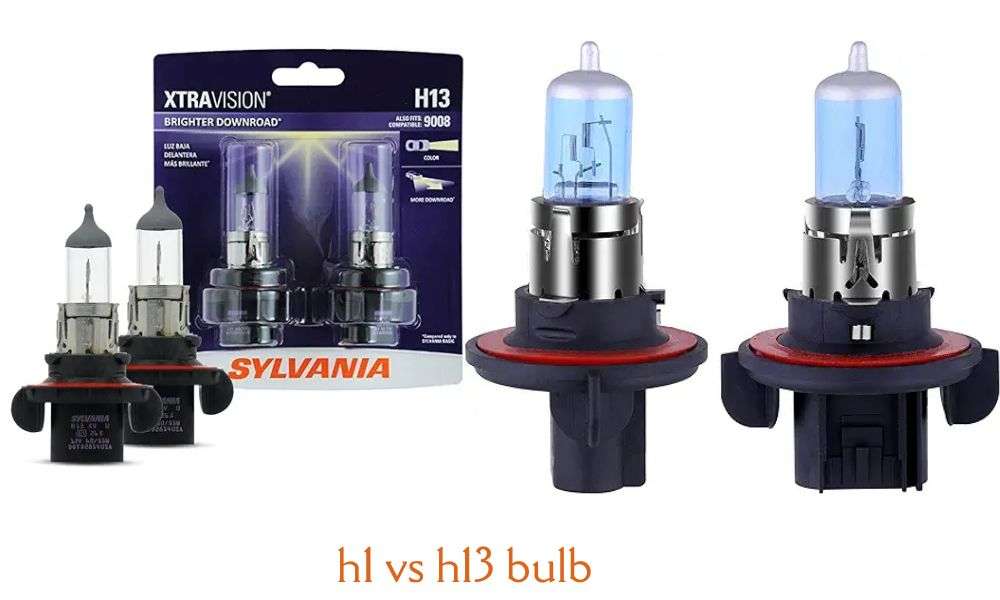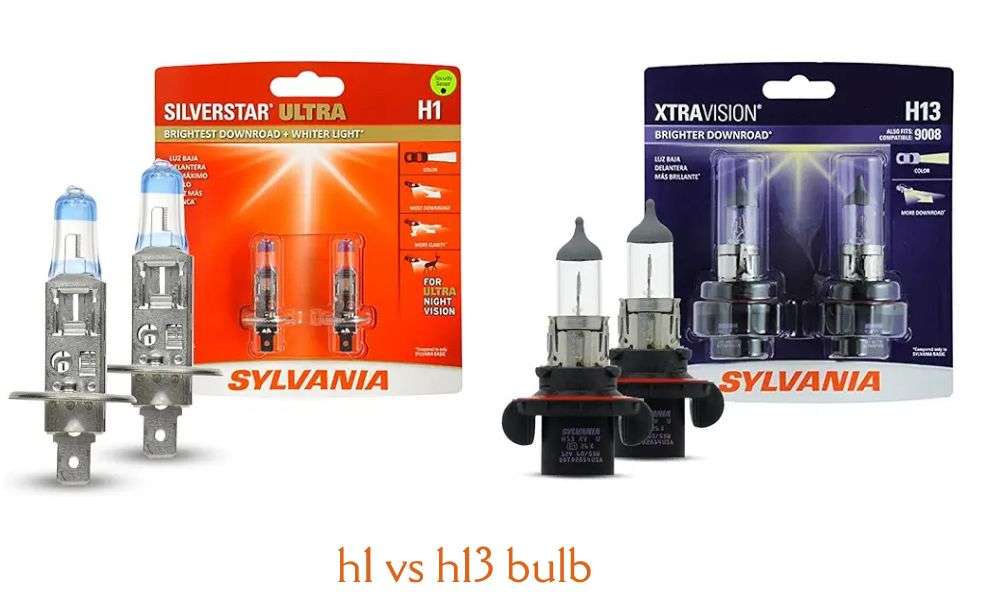Did you know that choosing the wrong headlight bulb can reduce your nighttime visibility by up to 50%? If you’re like me, you know how important proper lighting is for safe driving, especially during those late-night drives or foggy mornings. Working with various automotive lighting systems, you’ve often come across the H1 vs H13 bulb debate. Whether you’re replacing a burnt-out bulb or upgrading your vehicle’s lighting system, understanding the key differences between these two bulbs can make a huge difference in your safety and satisfaction. Let’s dive into everything you need to know to make the right choice!
Basic Specifications and Design Differences
The H1 and H13 bulbs are designed with different purposes in mind, and understanding their basic specifications can help you decide which is best for your needs.
- Physical Design and Connector Types: The H1 bulb is a single-filament bulb with a simple, compact design, while the H13 is a dual-filament bulb, offering both high and low beams in one unit. The H1 features a smaller base and a P14.5s connector, while the H13 has a more robust base with an integrated P43t-38 connector.
- Wattage and Voltage Specifications: The H1 typically operates at 55 watts, providing a consistent light output. The H13, on the other hand, operates at 60/55 watts, depending on whether you are using the high or low beam.
- Single-Filament (H1) vs. Dual-Filament (H13): The single-filament H1 bulb is often used for specific beam functions (like high or low beam), while the dual-filament H13 offers both in a single bulb, which makes it versatile for vehicles needing combined lighting in one headlight assembly.
- Base Types and Mounting Mechanisms: H1 bulbs have a slimmer base, making them easier to fit into smaller headlight housings. H13 bulbs are bulkier, requiring more space but offering the benefit of dual-beam functionality.
- Size and Dimensional Differences: The H1 is smaller, more compact, and lightweight compared to the larger, heavier H13. This makes the H1 easier to install in tight spaces but limits its flexibility compared to the more complex H13.
Vehicle Compatibility and Applications
When it comes to vehicle compatibility, both the H1 and H13 bulbs are used in different makes and models, but they serve different purposes.
- Common Vehicle Makes and Models Using H1 Bulbs: H1 bulbs are typically found in older European vehicles or cars that require a single-beam function. They are used for either high or low beams, depending on the headlight design.
- Typical Applications for H13 Bulbs: H13 bulbs are more commonly used in North American vehicles, particularly in trucks and SUVs. They are favored for their dual-filament design, which allows them to serve as both high and low beams in one unit.
- OEM Specifications and Requirements: Many manufacturers still use H1 bulbs for high-beam-only configurations, while newer cars favor H13 for its versatility.
- Regional Differences in Bulb Adoption: The H1 bulb is more popular in Europe, while the H13 is more common in the U.S. due to differences in automotive lighting standards and regulations.
- Cross-Compatibility Considerations: While there is no direct compatibility between H1 and H13 bulbs, some vehicles can be retrofitted to use either bulb with appropriate modifications, such as upgrading the headlight housing or wiring.

Performance Comparison
When comparing the performance of H1 vs H13 bulbs, several factors come into play, such as light output, beam pattern, and energy efficiency.
- Light Output and Brightness Levels: The H1 bulb typically produces a narrower, more focused beam, making it ideal for high-beam applications. The H13, with its dual-filament design, offers a broader beam with both high and low options, providing more versatility.
- Beam Pattern Characteristics: H1 bulbs are known for their precise, narrow beam patterns, making them perfect for long-distance illumination. H13 bulbs, however, offer a more widespread beam due to the dual-filament setup, which provides balanced visibility for everyday driving.
- Color Temperature Options: Both bulbs offer various color temperatures, typically ranging from 3000K (warm yellow) to 6000K (cool white), allowing you to choose the right light for your driving conditions.
- Power Consumption Efficiency: H1 bulbs are generally more energy-efficient due to their single-filament design. H13 bulbs use more power, especially when both high and low beams are in use.
- Life Expectancy and Durability: The lifespan of H1 bulbs is generally longer than H13 bulbs due to the simpler design. However, this depends heavily on usage and environmental factors such as vibration and heat.
Installation and Replacement Considerations
Replacing headlight bulbs can be a daunting task, but knowing the process for each type can help make it easier.
- Step-by-Step Installation Process for Each Type: Both H1 vs H13 bulbs require removal of the headlight housing, but H13 installations can be trickier due to the dual-filament structure.
- Required Tools and Equipment: You’ll need basic tools like a screwdriver and possibly gloves to avoid touching the bulb’s glass, which can reduce its lifespan.
- Common Installation Challenges: H13 bulbs are bulkier, which can make installation more challenging, especially in vehicles with limited space.
- Safety Precautions During Replacement: Always disconnect the vehicle’s battery before replacing headlight bulbs to avoid electrical shorts.
- Professional vs. DIY Installation Tips: If you’re comfortable with vehicle maintenance, both bulbs can be installed at home. However, if your car has complex wiring or tight spaces, it might be better to consult a professional.

Upgrading Options and Modern Alternatives
If you’re looking for something beyond traditional halogen bulbs, there are modern alternatives available.
- LED Conversion Possibilities: Both H1 and H13 bulbs can be replaced with LED versions, offering better energy efficiency and brighter light output.
- HID Upgrade Considerations: HID bulbs are another upgrade option, providing more intense light and a longer lifespan than halogen bulbs.
- Legal Requirements and Regulations: Always check your local regulations before upgrading to LED or HID bulbs, as some may not be street-legal in certain areas.
- Performance Upgrade Options: Upgrading to high-performance halogen bulbs or installing auxiliary lights can further improve visibility.
- Smart Lighting System Compatibility: Some newer vehicles come with smart lighting systems that adjust brightness automatically. Make sure your bulb choice is compatible with these systems.
Conclusion
Choosing between H1 vs H13 headlight bulbs ultimately comes down to your vehicle’s specifications and your specific needs. Remember that proper lighting isn’t just about brightness – it’s about safety, reliability, and compliance with local regulations. Whether you opt for the single-filament H1 or the versatile H13, ensure you’re purchasing from reputable manufacturers and following proper installation procedures. Ready to upgrade your headlights? Use this guide to make an informed decision that’ll keep you safely illuminated for miles to come!
Related articles:
- h1 bulb vs h4: Which One Is Best for Your Vehicle?
- The 7 Best H11 LED Bulbs for Brighter, Safer Driving
Hi, I’m Malik Suhail—an SEO expert, web designer, and passionate blogger with 2 years of experience. I specialize in crafting content that is not only informative but also tailored to meet the needs of my readers.
I write about diverse topics, always striving to simplify complex ideas and provide valuable insights that resonate with my audience. Whether it’s about SEO strategies, web design trends, or blogging tips, I am committed to delivering well-researched, practical, and easy-to-understand information.
My mission is to help readers navigate the digital world with confidence and clarity. I believe in adding value through authentic content that inspires action and delivers results.


